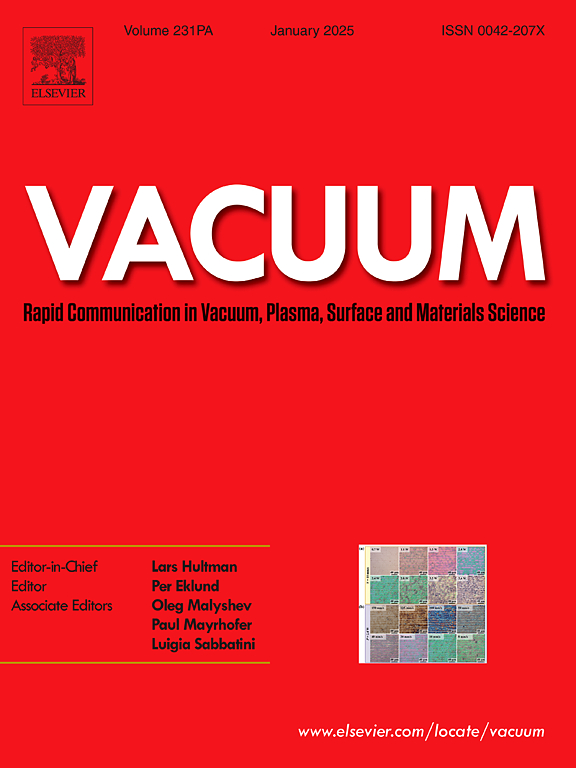Ion emission from niobium nanosecond laser plasma
IF 3.8
2区 材料科学
Q2 MATERIALS SCIENCE, MULTIDISCIPLINARY
引用次数: 0
Abstract
A niobium laser multicharged ion source was developed using laser ablation with 10-ns, 1064-nm pulses and a laser fluence of 10–83 Jcm−2. Three distinct groups of Nb ions were detected: ultrafast, fast, and thermal. The ions were accelerated and allowed to drift in a transport line containing an electrostatic ion energy analyzer, a retarding field analyzer, and a Faraday cup. Analysis of the ion energy and charge (z) showed that each group of ions experienced different acceleration potentials during plasma expansion. Time-of-flight (TOF) signal of the thermal ions showed overlap of the signals from Nb1+ and Nb2+. For the fast ion group, z up to Nb7+ was observed and the ion acceleration potential during plasma expansion increased with z, over the charge states from Nb1+ to Nb7+. The TOF signal indicated that the ultrafast ions were composed of higher-charge ions.
求助全文
约1分钟内获得全文
求助全文
来源期刊

Vacuum
工程技术-材料科学:综合
CiteScore
6.80
自引率
17.50%
发文量
0
审稿时长
34 days
期刊介绍:
Vacuum is an international rapid publications journal with a focus on short communication. All papers are peer-reviewed, with the review process for short communication geared towards very fast turnaround times. The journal also published full research papers, thematic issues and selected papers from leading conferences.
A report in Vacuum should represent a major advance in an area that involves a controlled environment at pressures of one atmosphere or below.
The scope of the journal includes:
1. Vacuum; original developments in vacuum pumping and instrumentation, vacuum measurement, vacuum gas dynamics, gas-surface interactions, surface treatment for UHV applications and low outgassing, vacuum melting, sintering, and vacuum metrology. Technology and solutions for large-scale facilities (e.g., particle accelerators and fusion devices). New instrumentation ( e.g., detectors and electron microscopes).
2. Plasma science; advances in PVD, CVD, plasma-assisted CVD, ion sources, deposition processes and analysis.
3. Surface science; surface engineering, surface chemistry, surface analysis, crystal growth, ion-surface interactions and etching, nanometer-scale processing, surface modification.
4. Materials science; novel functional or structural materials. Metals, ceramics, and polymers. Experiments, simulations, and modelling for understanding structure-property relationships. Thin films and coatings. Nanostructures and ion implantation.
 求助内容:
求助内容: 应助结果提醒方式:
应助结果提醒方式:


